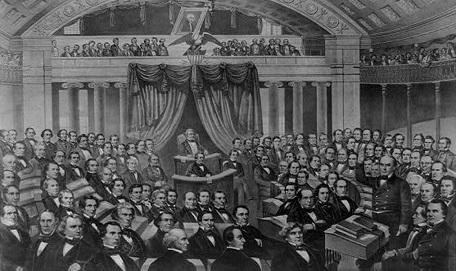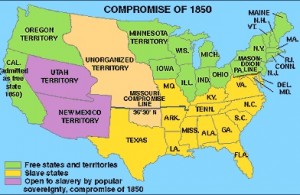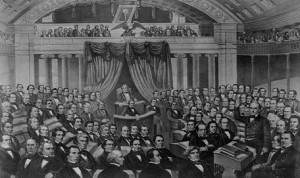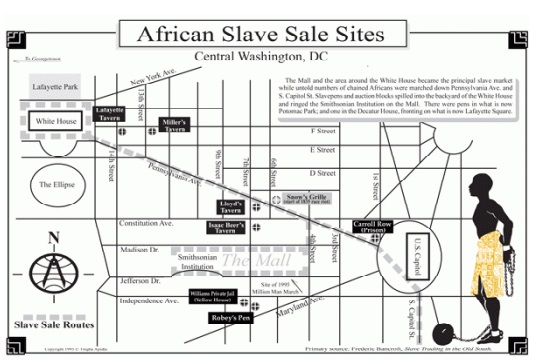Huge land deals and sectional views over the spread of slavery into the new territories were splitting the nation and threatening peace in antebellum America. The first time a petition for the abolition of slavery was brought up to Congress was in 1790 by Benjamin Franklin, one of the Founding Fathers. His petition was immediately rejected arguing that the 1787 Constitution did not allow Congress to abolish slavery or its trade.
Support for slavery and support for its abolition was split into south and north respectively. The Louisiana Purchase in 1803 doubled the size of the country. The US-Mexican war led the United States to acquire vast territories of New Mexico, Utah and California, adding the settlement of Oregon, the country had expanded 68% by 1850. The polarizing question was: Should slavery be allowed into the new territories? The Wilmot Proviso bill of 1846 was a failed attempt at prohibiting slavery from those territories. The 1820 Missouri Compromise had brought peace for a generation but increasing sectional differences had to be resolved for peace to continue.
The country was divided into north free states (green) and south slave states (yellow). California was admitted as a free state in 1850. Utah and New Mexico (purple) were open to slavery by popular sovereignty.
The north was increasingly becoming antislavery while the south’s support for slavery had never been stronger. Congress was divided along those lines. According to historian John C. Waugh, Congress was split in four ways:
Pro compromise Democrats: This group supported popular sovereignty and believed that congress should not get involved. Citizens should decide for themselves.
Pro compromise Whigs: Favored a compromise but did not believe that popular sovereignty should rule. Congress had the power to decide according to the constitution.
Anti compromise Free-Soilers: At one end of the spectrum were the anti compromise Free-Soilers, northern radicals. These were northern leaders who wanted slavery abolished altogether. They considered Congress had the power to rule over slavery in the American territory but a higher moral power called for the elimination of slavery. There was no compromise, slavery should be abolished.
Anti compromise Democrats: At the other end of the spectrum were the Anti compromise Democrats. Slave holding was a right supported by the Constitution and Congress had no power over it. These southern radicals believed they could take their slaves and settle anywhere in the country especially in the new territories. They accepted no compromise. The alternative was cessation from the Union.
In Congress, Daniel Webster, a Whig party leader, delivered a three-hour speech on the issue of slavery.
If California was admitted as a free state, New Mexico and Utah would most likely follow. Anti compromise Democrats would never allow it, they rather seek disunion and fight for what they perceived was their rights. The political equilibrium was affected and the country was in the brink of cessation and civil war unless a compromise could be found to save the Union.
The Compromise of 1850 managed to prolonged peace for a decade. The subsequent Kansas-Nebraska Act of 1854 failed to bring continued peace and was followed by Bleeding Kansas, the Dred Scott Case and the Harper’s Ferry raid which further divided the nation and led to the inevitable, the American Civil War in 1861.Back to Compromise of 1850 Homepage



